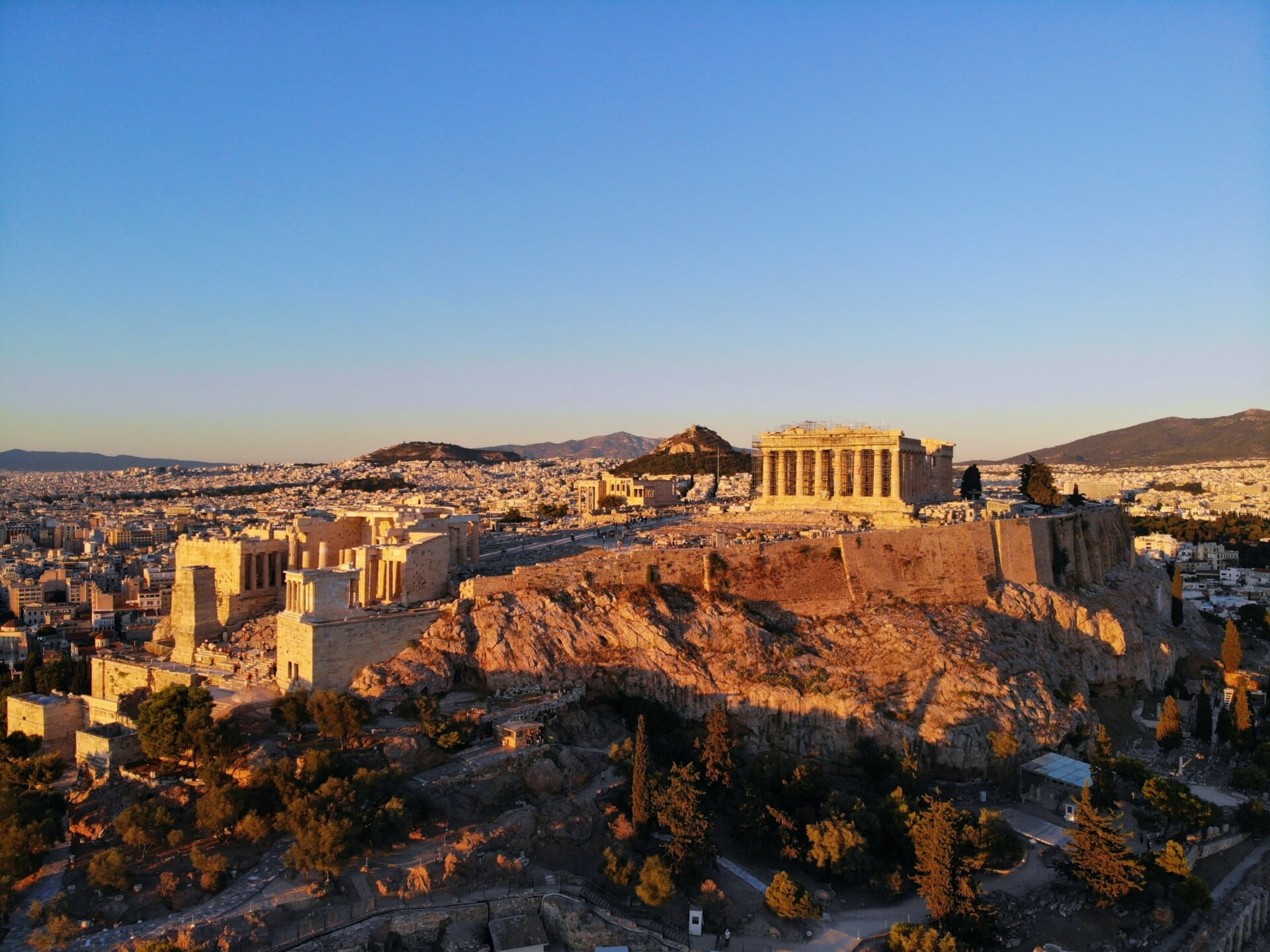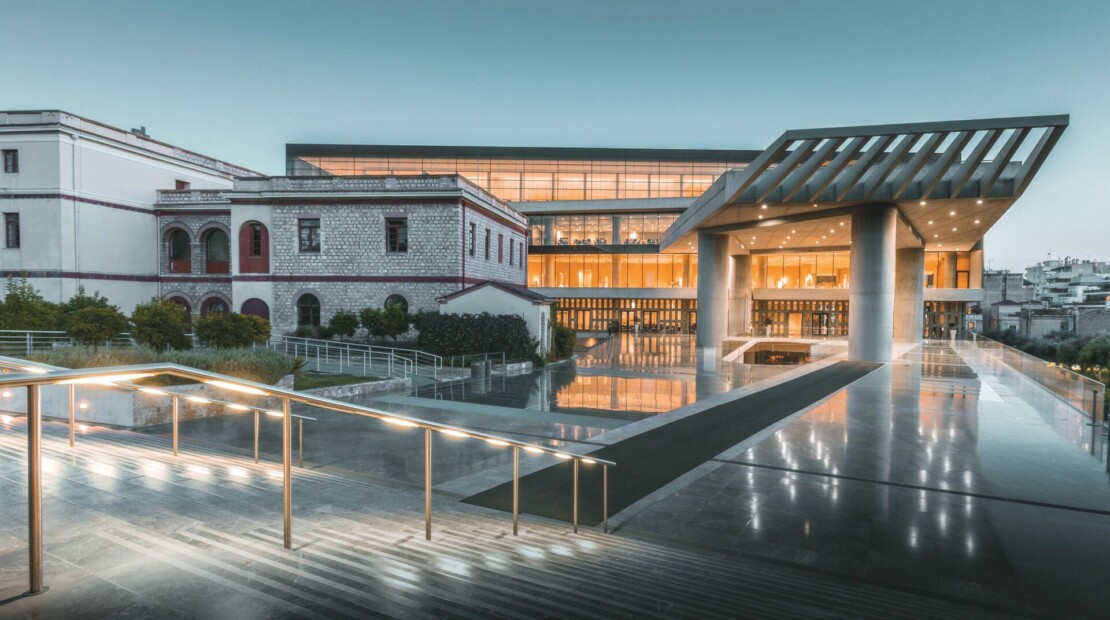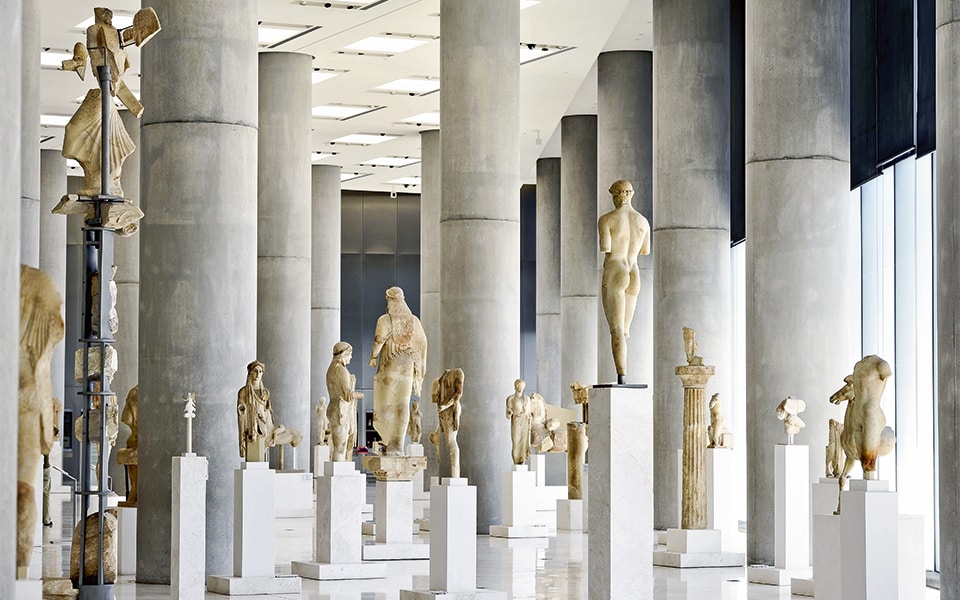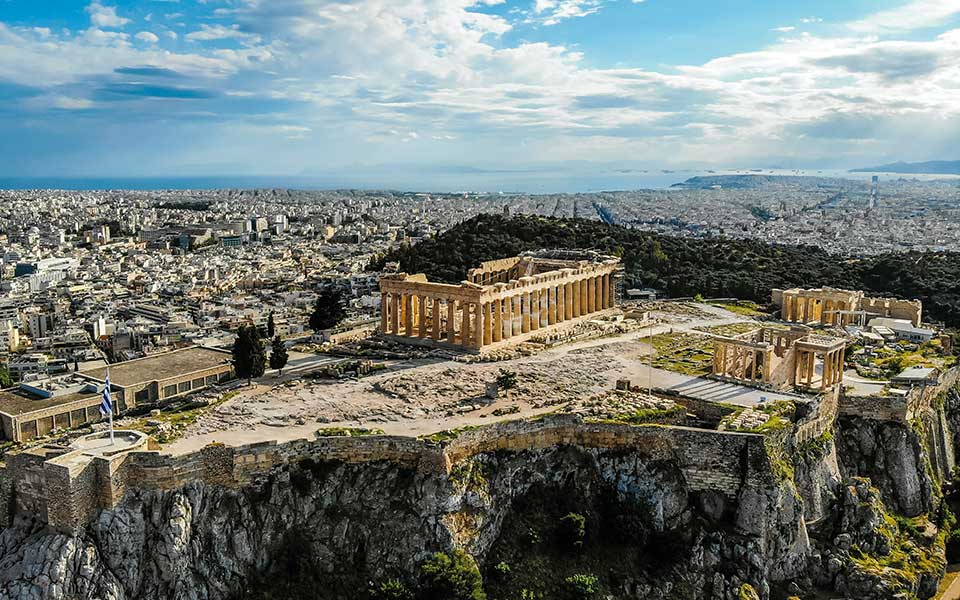The Acropolis Museum is Greece’s newest and most famous museum. Greeks are proud of this museum and rightfully so; it is a dazzling modernist structure with impressive displays artfully arranged by historic period. Operated for the public in 2009, the Acropolis Museum quickly became a must-see attraction for locals and visitors alike. It includes countless statues, friezes, artifacts and even objects used in everyday life in ancient times. Underneath its glass floor visitors can see the sanctuaries that had been built on the slopes of the Actopolis.
The National Archaeological Museum of Athens is not just Greece’s largest museum but also one of the world’s most important. Here you will find the world’s biggest collection of Greek antiquities ranging in date from the Mycenaean to the Hellenistic age. Vases, amphorae, bronze and marble statues, rare epigraphs, even utensils and everyday objects from ancient history are all here for you to admire.
The Benaki Museum, unlike the previous museums, offers a more intimate experience. Housed in an historic neo-classical building in the city center, the museum was initially a private collection of the Benaki family which was donated to the Greek state in 1931. Unique examples of ceramics, sculpture and jewellery are included in its Geometric, Archaic, Classical, Hellenistic, Roman and Byzantine collections. The Benaki Museum is easily accessible either by Syntagma or Evaggelismos Metro stations.
The Goulandris Museum of Cycladic Art is dedicated to the history of ancient cultures of the Aegean and Cyprus, with special emphasis on Cycladic Art of the 3rd millennium BC. Founded in 1986 to house the collection of the Goulandris family, it has since then grown in size to accommodate new acquisitions, obtained either through direct purchases or through donations by important collectors and institutions. Located in Kolonaki square, it is easily reached from Syntagma Metro station.
The Numismatic Museum is one of the oldest in the city, founded in 1834, and displays important collections of coins, medals and precious stones from ancient Greece, Rome, Byzantium, the Ottoman period and modern Greece. The building is on Panepistimiou street, near the Syntagma and Panepistimiou metro stations. Its façade with arched verandas and Ionic columns makes it one of the most beautiful houses in Athens.
The Kerameikos Museum houses findings from excavations in Kerameikos, the ancient cemetery of Athens. Here you will find funerary urns, grave offerings and funerary monuments of exquisite taste and artistry, such as the Geometric urn amphora, the Amasis Lekythos and the Hydria by the painter Meidias with a multifigured scene. The museum is near the Kerameikos and Thissio stations.
MUNICIPAL GALLERY (FORMER SILK FACTORY)
The entirely renovated building of the Municipal Gallery at Metaxourgeio is one of Athens’s oldest neoclassical structures, an iconic work of Danish architect Christian Hansen, famous designer of the city’s “Neoclassical Trilogy” on Panespistimiou st. (Library – Academy – University). The building served as a silk-processing factory until 1875; its presence was so dominating that it gave its name to the neighborhood. Municipal authorities began renovation works on the abandoned building in 2007 in order to house important cultural events. Since 2010 it is home to the Municipal Gallery. Events lined up for the 2016-17 season include tributes to important Greek artists such as Theofrastos Triantafyllides (“One more Thirty for painting”, October 14 – December 18) and Alekos Fasianos (“91 books with works of art by Alekos Fasianos”, November 8 – January 8), an exhibition from the Greek Chamber of Visual Arts (“1950 – 1974, Visual Arts and Resistance”, January 24 – March 12), and an exhibition from artist Maria Lassnig (“The future is created from the fragments of the past”, March 31 – July 16).Municipal Gallery, Leonidiou & Myllerou, 210-3243022
The Byzantine and Christian Museum’s large collection documents the development of art from the early Christian period to the post-Byzantine years (4th to 19th centuries). The collection includes sculptures, paintings and small ornaments from Greece and other parts of the Byzantine Empire. Here you will also find around 3500 icons, the largest number of icons collected by a single museum in the world. The museum is housed in the Ilission Mansion, very close to the Evaggelismos station.
The Hellenic Children’s Museum is located in the heart of Plaka and is the perfect place for a family visit. The museum takes a hands-on approach in teaching children with activities to encourage children to discover, understand, learn and have fun.
Ilias Lalaounis was a famous jewelry designer who passed away in 2000. Since 2001, the Ilias Lalaounis Museum collects and displays jewelry and other decorative arts from different periods and various cultures. The jewels on the first floor are inspired by the Paleolithic and Neolithic periods, even from pre-historic times. The displays on the second floor are inspired by nature and by modern technology. Don’t miss the “Special Requests” display, with jewels and ornaments that were made upon special request. The museum is conveniently located next to the Acropolis and fits easily into your itinerary. The War Museum is one of the best-known buildings in Athens due to its unique architecture and central location at the junction of Vasilissis Sofias avenue and Rizari street, next to the Byzantine museum and close to Evaggelismos station. On the ground floor and mezzanine you’ll find heirlooms, weapons and objects from World War II, the Korean War and Cyprus. On the first floor, you can see an impressive display of objects from the military history of Greece from pre-historic years to World War II.
The National Art Gallery is a must-see for art lovers. The gallery’s collection comprises more than 9.500 paintings, sculptures and engravings from world-famous Greek and foreign artists. The permanent collection of Greek paintings extends to the first and second floor of the main wing. On the first floor, visitors can see works from the 19th century and on the second floor, 20th century works. Some of the most famous masterpieces on permanent display are: “The Engagement of the Children”, “Arts and its Spirits”, “Springs Symphony” and “Here Comes the Bridegroom” by Nikolaos Gizis, “Lyssandros Kaftantzoglou” by Nikiforos Lytras, “The Port of Copenhagen” by Ioannis Altamouras and many, many more.



